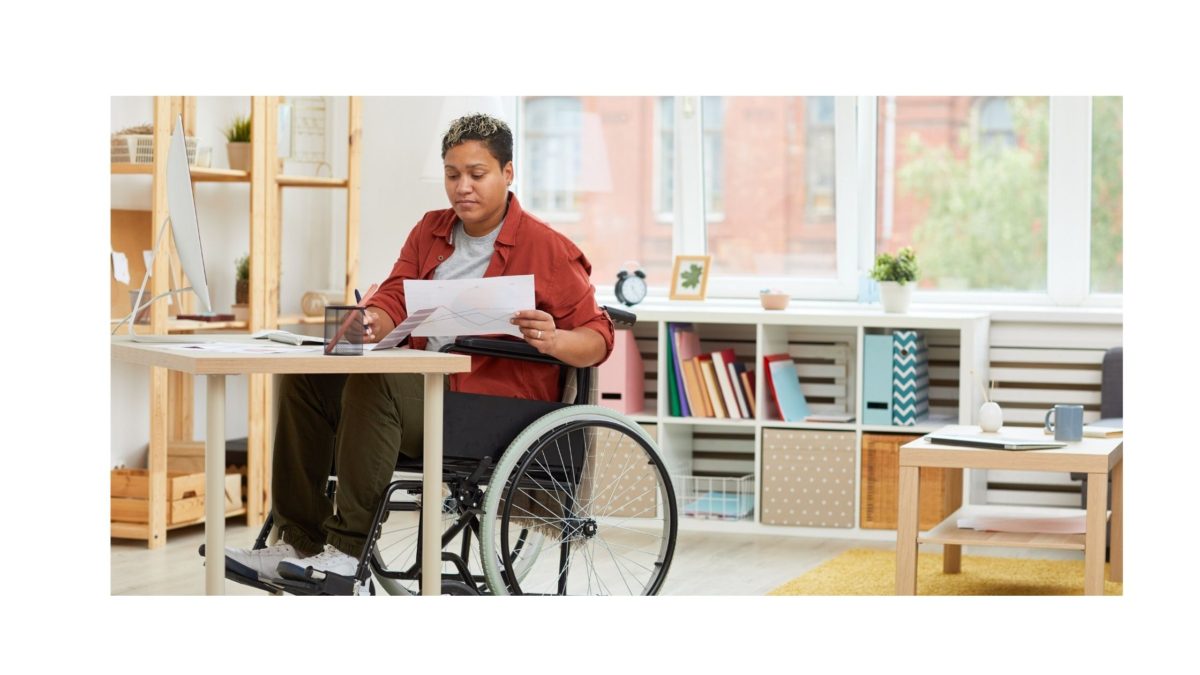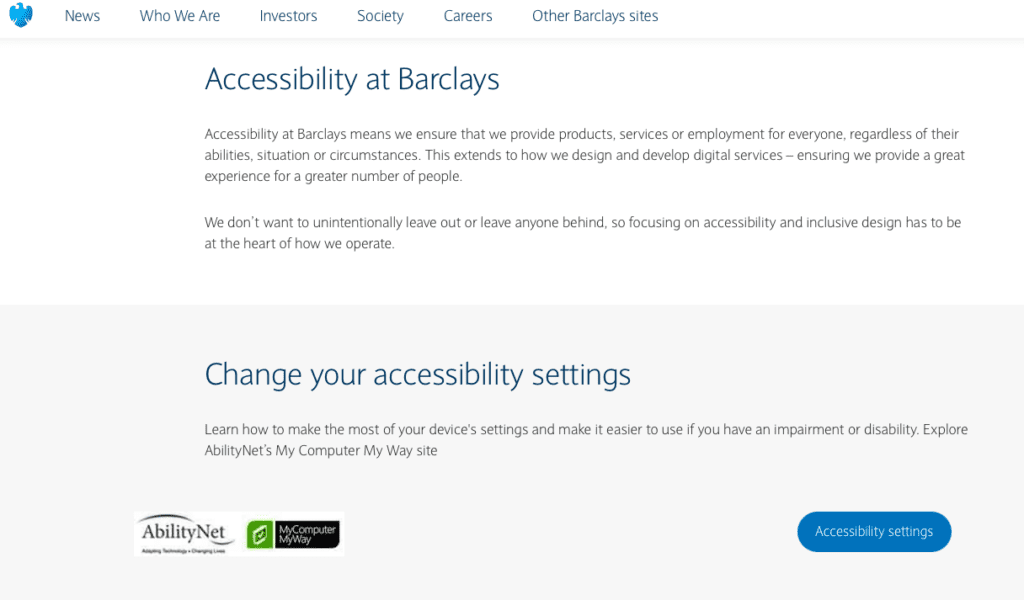Your guide to building a disability-friendly workplace

Earlier this year Bloomberg did a story on tech makers who are redefining accessibility. The article noted how new tools are opening pathways for technology to be usable by anyone, regardless of ability. While apps like BlindSquare, BrailleNote Touch, etc. help visually impaired people move through the world and complete activities this only implies that the infrastructure itself isn’t accessible to all. In this article, we will decode the things organisations can do to create a disability-friendly workplace.
If we look at the statistics –


In most developed countries the official unemployment rate for persons with disabilities of working age is at least twice that for those who have no disability.
As the DEI wave sweeps across globally, it is essential to consider and address the ableist nature of workplaces and make them accessible to all. Business leaders need to learn more about what they can do to create a more inclusive climate for employees with disabilities in order to take effective action. like-
Learn more about various disabilities
It will be very challenging and unrealistic of you to build an inclusive workplace without making yourself aware of different types of disabilities. Disability in itself is vastly diverse and calls for different responses. To begin with, you must learn about general rules of etiquette for interacting with people with disabilities. There is a free resource guide on disabilities created by International Labour Organisation that you can follow or watch youtube videos on disability etiquette training to understand the basics and for the details beyond this, the how-tos and specific accommodations you must ask people themselves.
Rumpa Banerjee, who works as a communication coordinator at National Centre for Autism said that she is able to work with autistic individuals only because she fully understands their condition. She said that understanding and accepting people’s disabilities is a prerequisite for building an inclusive workplace.
Conduct an accessibility assessment of your workplace
Krunal, who has mobility impairment, mentioned that he cannot work at a place that requires him to sit for 8 hours or longer because of his condition. Clearly, having a blanket policy for all employees might not be ideal while building an accessible workplace. You must assess your organization on -flexibility of work policies? Do your DEI efforts include people with disabilities? How easily can a disabled employee get arrangements to make their work easier, or even possible? Are you focusing on the intersectionality of marginalized groups, especially disability and gender? Who is accountable to ensure that your organization is disability-inclusive? You might not have everything in place just as you read this article but do you have timelines in place to make your workplace accessible for people with disabilities?
Also read: Before You Talk Of Inclusion at Work, Fix Your Bias Against Persons With Disabilities
Strengthen the hiring pipeline
Start by understanding the barriers that discourage people with disabilities from applying to work for you – e.g. application format, online accessibility, and even the language of job descriptions. Using disability inclusion statements in job advertisements and in the careers section of the organization’s website can encourage people with disabilities to apply at your workplace. Alternatively, you may also list job openings on disability-oriented job boards like Enable India, etc.
Conduct disability sensitization sessions on inclusive practices
Turab Chimthanwala, a company secretary from India shared his experiences of how colleagues’ mindsets can be a huge barrier in fully integrating people with disabilities at work. He is visually impaired and while sharing his experiences, he mentioned that 99% of the people at the workplace do not interact with him as they either get overwhelmed with his impairment or would get too sympathetic. He asserted that his disability awareness training should be made mandatory for all employees.
If there are financial or time constraints, focus initially can be on providing training to human resources, management, and those who work directly with a colleague with a disability. This will help in tackling implicit bias so that colleagues could freely interact with each other and have open conversations about disabilities. This will also include teaching employees appropriate ways to express concern and offering help to disabled employees.
For instance, Lemon Tree Hotels is an inspiring example of workplace inclusiveness. The chain employs approximately 550 persons with a range of physical, intellectual/developmental, and special learning disabilities — 10% to 12% of its workforce. New recruits must take an introductory sign language course so they can communicate with non-hearing colleagues.
Build accessible infrastructure
Arushi Singh, a lawyer from India having mobility impairment said that she is not able to access most courts in India as they do not have ramps or accessible washrooms. From the physical environment to work-day structure and technology, there are several ways to broaden accessibility. People with disabilities need to feel included in and comfortable with their physical working space, and office design needs to take this into account.
For instance, Atos works to improve the availability of assistive technologies, such as text-to-speech, in its core employee tools as an integrated part of its DigitalNow transformation program.
Also read: Rights of People with Disabilities under the Rights of People with Disabilities Act
The most common physical adjustments for buildings include- addition of ramp or lift access, accessible toilets, widening doorways and corridors, lowered countertops, handles, and light switches. When it comes to office or factory spaces, further adjustments may be required to assist someone with a disability in doing their job. They may require:
modified or additional furniture, specialist software, specialist lighting, and good visual contrast.
Ableist language check
Instead of minutely focusing on which terms should and shouldn’t be used to refer to people with disabilities the best and easiest way is to use the terminology preferred by the person.
The next crucial step is to cut down on seemingly harmless but corrosive labels which we throw around every day without thinking like – slow, stupid, challenged, etc.
Role Models in leaderships
When employees with disabilities have role models at the leadership level who have disclosed their own disabilities, they are more likely to apply and work at such places.
Build disability-inclusive culture
Richi Singh, a TISS scholar says that his idea of inclusion is of universal design which is the same for all – be it employees, customers, vendors, or partners. Your disability-inclusive efforts should not be limited to only hiring people with disabilities. It should become a part of your culture, service & product. Consider reviewing your media and communication materials and how you might represent and speak to a broader spectrum of people. For instance, on Barclay’s website, you can find a wide range of support for people with different accessibility needs, from practical tools such as assistive technology for the visually and hearing impaired to advise on how to manage finances if you or a loved one has a disability. This opens Barclays to a far broader customer base and boosts its reputation.



Another example is how Soda Bottle Opener Wala, a Parsi joint gives a cute little handout along with its menu to its customers so that they know basic etiquette while interacting with their staff. The disability-inclusive practices need to become a part of your process & design.
Confidentiality
Different disabilities call for different levels of confidentiality and disclosure. Broadly speaking, with many individual exceptions, mental health and intellectual disabilities carry more stigma than physical and sensory disabilities. Also, invisible disabilities tend to generate more mystery, speculation, and doubt, making open discussion potentially helpful, but also risky. The key is to discuss the pros and cons of talking openly about an employee’s disability and workplace accommodations, but ultimately leaving decisions about disclosure up to each person.
Inclusive businesses are a magnet for talent, have a broader customer base, spur more innovation, and offer a better quality of life for all. As Debra Ruh says, that “the only disability is when one cannot see the human potential.” All these pointers as discussed above to create a disability-friendly workplace do not require massive costs rather all that is needed is the intention to build disability-friendly workplaces.
About the author: Vanita is a lawyer and Lead – Research & Communications at Ungender. She writes extensively on building inclusive workplaces, gender issues, social inequalities, and public policy.
Ungender Insights is the product of our learning from advisory work at Ungender. In our initiative to build inclusive workplaces for all individuals, we continue to educate and advise leaders on the same. Write to us at contact@ungender.in to know more about our advisory services.
Read our insights about diversity, legal updates and industry knowledge on workplace inclusion at Ungender Insights. Visit our Blog.
Sign up to stay up-to-date with our free e-mail newsletter.
The above insights are a product of our learning from our advisory work at Ungender. Our Team specialises in advising workplaces on gender centric laws.
or email us at contact@ungender.in




